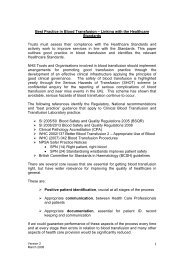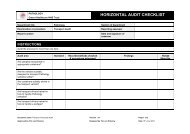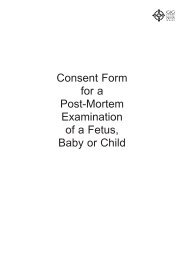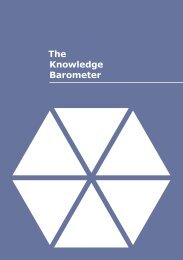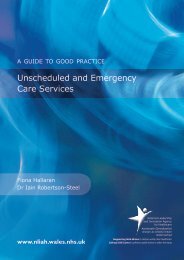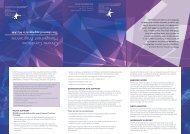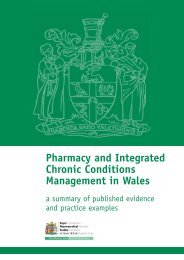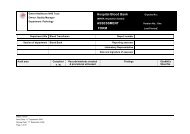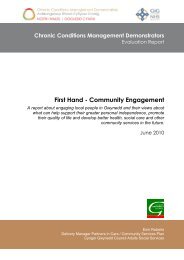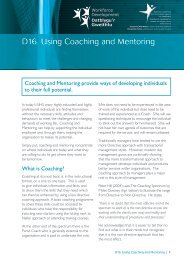Time-Driven Activity-Based Costing
Time-Driven Activity-Based Costing
Time-Driven Activity-Based Costing
Create successful ePaper yourself
Turn your PDF publications into a flip-book with our unique Google optimized e-Paper software.
These implementation problems have become obvious to most ABCimplementers. But a subtle and more serious problem arises from the interview andsurvey process itself. When people estimate how much time they spend on a list ofactivities handed to them, invariably they report percentages that add up to 100%. Fewindividuals report that a significant percentage of their time is idle or unused. Therefore,cost driver rates are calculated assuming that resources are working at full capacity. But,of course, operations at practical capacity are more the exception than the rule.ABC cost driver rates should be calculated at practical capacity not at actualutilization. 7 Returning to the numerical example at the beginning of this paper, if thepractical capacity of the resources are not fully used by the demands of handling 9,800customer orders, 280 credit checks, and 500 credit approvals, the cost driver rates shouldbe lower, perhaps significantly lower, than the rates calculated based on actual demands.In summary, the process of calculating activity expenses through interviews,observation and surveys has proven to be time-consuming and costly to collect the data,expensive to store, process and report, difficult to update in light of changingcircumstances, and theoretically incorrect, by suppressing the role for unused capacitywhen calculating cost driver rates.<strong>Time</strong>-<strong>Driven</strong> ABC: A Simple, Accurate ApproachAn alternative approach for estimating an ABC model, which we call “timedrivenactivity-based costing,” addresses all the above limitations. 8 It is simpler, lesscostly, and faster to implement, and allows cost driver rates to be based on the practicalcapacity of the resources supplied. In retrospect, we wish that the evolution of ABC inthe 1980s had taken a different path so that this method could have been implemented atthe outset. But the underlying theory for ABC had not been developed when it was firstintroduced in the mid-1980s so the elegance and conceptual clarity of this new approachwere not obvious at the time.The basis for the new approach is highlighted in an early cost management article,where Robin Cooper articulated the difference between transactional and “effort” costdrivers. 9 Transactional cost drivers count the number of times an activity is performed.Examples include number of production runs, number of setups, number of shipments,number or purchase orders, and number of customer orders. When the resources requiredto perform each occurrence of an activity vary, such as when some setups are moredifficult or complex to do than others, or when some customer orders require more timeand effort to process than others, then simply counting the number of times an activity isperformed gives an inaccurate estimate of the resources required to accomplish the work.The heterogeneity in transactions can be handled in two ways by the ABC system.One is to expand the number of activities, into say handling a simple order, an averageorder, and a complex order. The resource costs then have to be assigned to the three types5




